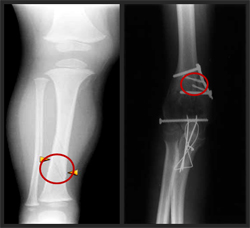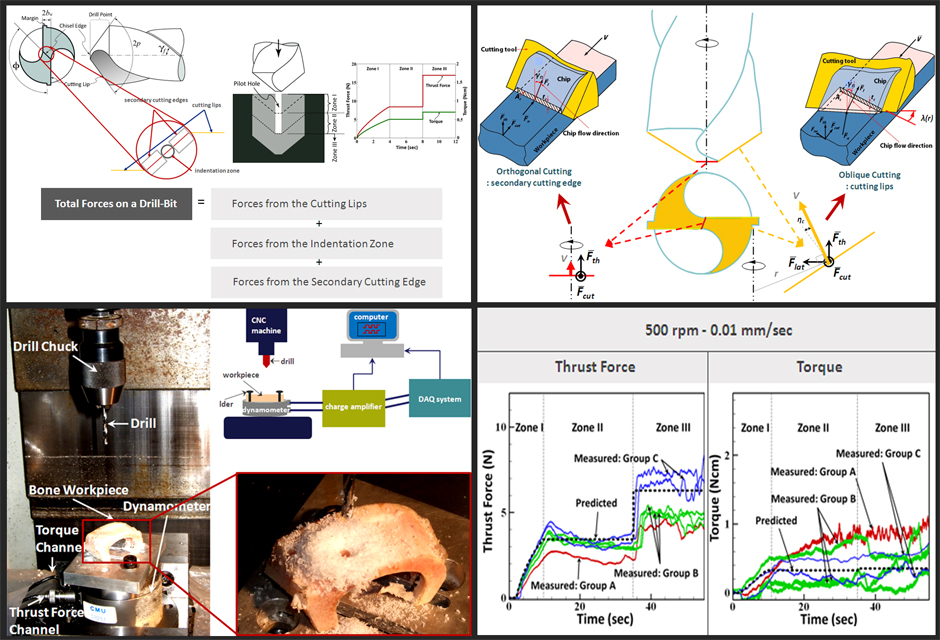A procedure is outlined to calibrate the specific energies, where only a small number of calibration experiments are required for a wide range of drilling conditions and drill-bit geometry. The calibration parameters for the cortical portions of bovine tibia are identified through drilling tests. Subsequently, a series of validation tests are conducted under different feed rates and spindle speeds. The thrust forces and torques were observed to vary considerably between bones from different animals. The forces from the model were seen to match well with those from the experimentation within the inherent variations from the bone characteristics. The model can be used to select favorable drilling conditions, to assist in robotic surgeries, and to design optimal orthopaedic drill bits.
Mechanical Analysis in Bone Drilling

Prediction and control of bone drilling forces are critical to the success of many orthopaedic operations.
Uncontrolled and large forces can cause drill-bit breakage, drill breakthrough, excessive heat generation, and mechanical damage to the bone.
In this stduy, a mechanistic model was developed a mechanistic model for the bone drilling process to enable prediction of bone drilling forces as a function of drill-bit geometry and drilling conditions.
The model incorporates the radially-varying drill-bit geometry and cutting conditions analytically, while capturing the material and friction properties empirically through a specific energy formulation.
The forces from the chisel edge are modeled by considering the indentation process that occurs in the vicinity of the drill-bit axis.
In the drilling experiments, a micro-scale (170 µm) pilot hole was first drilled on the bone with a micro-drill to separate the chisel edge and cutting-lip forces.
